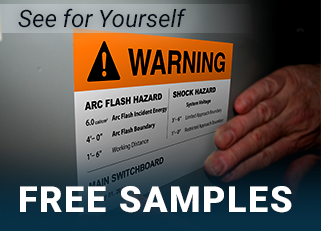NIOSH Study Links Workplace Noise, Heart Health
03
February,
2023
2 MINUTE READ

Excessive noise hazards at work not only affect a worker's hearing but it might contribute to some heart ailments, according to a study from the National Institute for Occupational Safety and Health (NIOSH). After conducting a thorough investigation and interviewing workers of all work backgrounds and exposures relating to hearing, scientists said they were able to draw their conclusion. The results show that workers with lifelong occupational noise exposure are more likely to develop hypertension, high cholesterol, and hearing difficulty. Reducing or managing workplace noise levels can prevent hearing loss, and now, may also impact blood pressure and cholesterol.
Noise Hazards
There is a mammoth amount of government data that shows which jobs in the U.S. are the most dangerous and why workers are at risk for serious occupational exposures. For years, workplace noise has been a hazard for hearing, with more than 22 million worker exposures to potentially damaging noise risk, according to the U.S. Department of Labor. About $242 million is spent each year on compensating those whose work conditions cause hearing loss.
"Reducing workplace noise levels is critical not just for hearing loss prevention-it may also impact blood pressure and cholesterol," says Dr. John Howard, Director of NIOSH. "Worksite health and wellness programs that include screenings for high blood pressure and cholesterol should also target noise-exposed workers."
Ensure compliance with noise legislation and help with hearing loss prevention. The legal limits on noise exposure in the workplace are set through OSHA's Occupational Noise Exposure in regulation 1910.95. Based on a worker's time-weighted average over an 8 hour day, 1910.95(c)(1) states that the employer must administer a continuing, effective hearing conservation program.
Workplace noise is a problem when:
- A worker's ears ring after leaving work.
- A worker feels the need to shout to be heard by someone close by.
- A worker has temporary hearing loss or a feeling of ears being "stuffy" after work.
Managing Noise Exposure
Reduce noise hazards with low-decibel tools and machines for engineering controls and implement administrative controls to help reduce or eliminate exposing workers to too many or unnecessary noises. Make sure hearing personal protective equipment is available and organized by its noise reduction rating. Install visual communication tools using a variety of hearing protection labels and signs. Provide employees with training and information so that they are aware of the hazards of excessive noise exposure. Mark pedestrian paths away from areas that have a high level of noise. Maintain records regarding monitoring and noise sampling, and provide workers with access to those records. Take safety even further by ensuring equipment stations such as first-aid kits and automated external defibrillators (AED) are identifiable through signs, labels, and floor tape.
Learn what essential safety communication you need and how to create it per OSHA and ANSI standards and requirements in our free OSHA Safety Signs Guide.
RELATED RESOURCES

Do You Hear What I Hear? Tips for Conservation
Does your workplace have a hearing protection program? Use these simple tips to improve worker hearing ...
Read
U.S. Department of Labor to Help Combat Hearing Loss
Together with the Mine Safety & Health Administration (MSHA) and the National Institute for Occupational ...
Read
Hearing Loss Now Afflicts 40 Million Americans, Says the CDC
One in four adults aged 20 to 69 are experiencing hearing deficits, according to a study conducted by the ...
Read.png)


